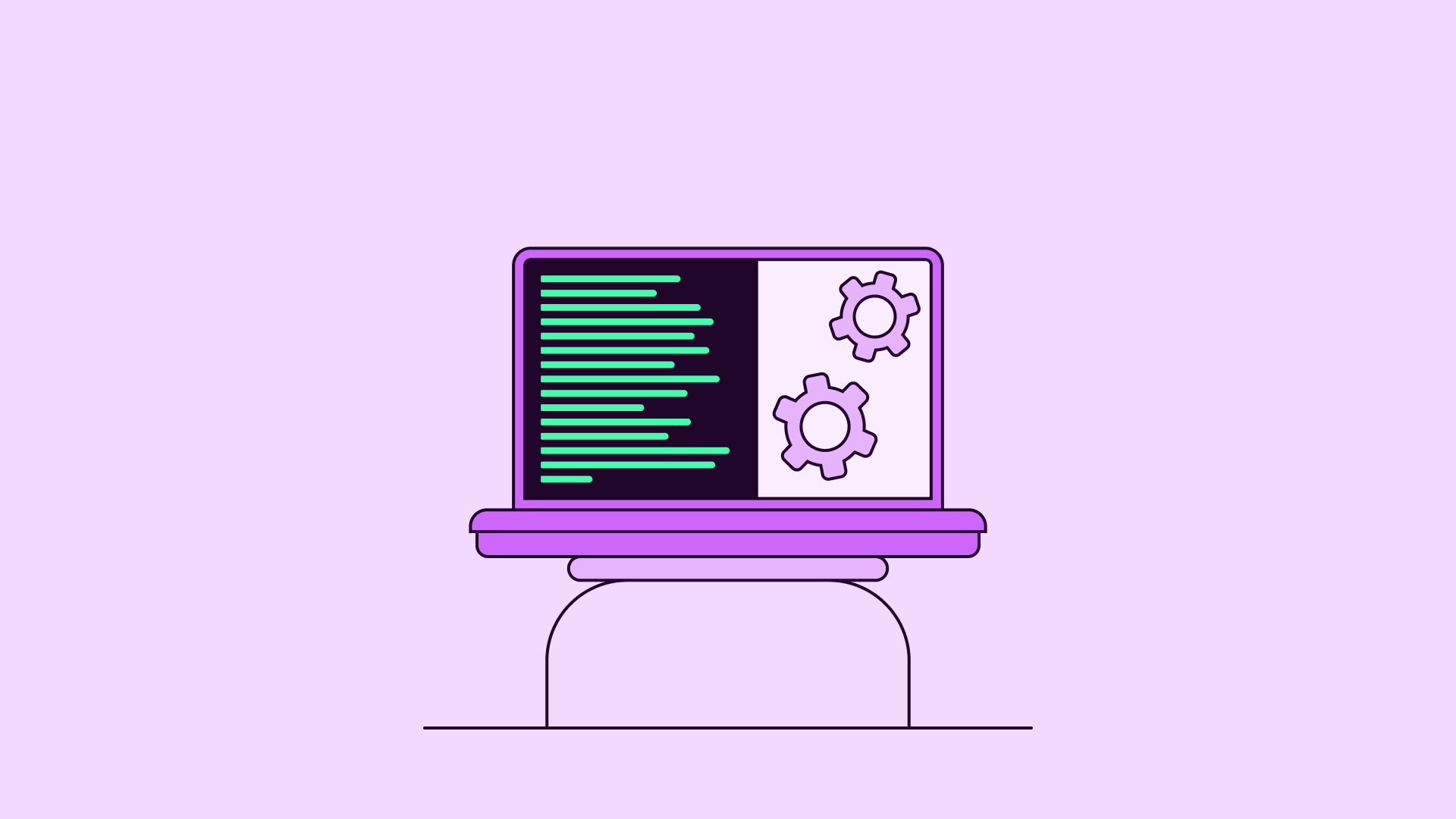
Healthcare Automations
19 min
12 Best HIPAA Compliant Workflow Automation Software
Summary
Your Competitors Are Embracing AI – Are You Falling Behind?
Finding the best HIPAA compliant workflow automation software can be overwhelming, especially with so many platforms claiming to offer seamless connections and automation.
The right solution should reduce complexity, improve efficiency, and scale as your healthcare organization grows.
In this article, we compare the best healthcare integration software based on features, pricing, user experience, integrations, and support so that you can make the most informed decision.
Best HIPAA compliant workflow automation software reviewed
Healthcare integration software plays a critical role in connecting EHRs, applications, and third-party tools across the healthcare ecosystem.
We evaluated the top solutions based on:
- Features & functionality
- Pricing and scalability
- Ease of use and onboarding
- Support responsiveness
- Integrations and ecosystem compatibility
In this guide, we’ll share our findings to help you choose the best fit for your organization.
Top healthcare integration software – Comparison & ratings chart
Best healthcare integration software reviewed
Here’s our review of the best HIPAA compliant workflow automation software available on the market today.
1. Keragon

Keragon is a HIPAA-compliant no-code automation platform built for healthcare organizations, designed to help practices, clinics, and digital health companies securely connect their EHR systems, applications, and workflows without writing custom code.
Unlike generic automation tools, Keragon is focused on healthcare use cases, ensuring integrations are compliant, reliable, and easy to deploy.
Keragon is best for healthcare providers and digital health innovators who want to reduce manual work, improve patient operations, and focus on what matters most: care.
Solving core healthcare integration challenges
Healthcare organizations consistently face three major integration roadblocks:
Fragmented systems & data silos
- Problem: Patient data is often scattered across EHRs, scheduling apps, billing systems, and communication tools, leading to inefficiencies and errors.
- Keragon’s solution: Prebuilt healthcare connectors and a no-code workflow builder allow you to integrate Jotform, Athenahealth, DrChrono, Salesforce, and Slack seamlessly, creating one source of truth across your ecosystem.
Compliance & security concerns
- Problem: Using general-purpose automation tools often creates HIPAA compliance risks when handling PHI.
- Keragon’s solution: Keragon is designed from the ground up for healthcare, offering HIPAA and SOC 2 Type II compliance, encryption, and audit logs, giving IT and compliance teams peace of mind while enabling operational agility
Resource constraints & slow deployments
- Problem: Custom integrations often require months of engineering time, delaying workflows and driving up costs.
- Keragon’s solution: With its drag-and-drop builder, healthcare teams can launch compliant automations in days, not months. The platform’s responsive support team even builds new API connectors in as little as one to two weeks on request.
Top features
- Prebuilt healthcare connectors (EHR, CRM, comms)
- HIPAA and SOC 2 Type II compliance
- Drag-and-drop workflow builder
Pros
- Built specifically for healthcare
- Fast deployment of new connectors
- Strong compliance posture
Cons
- Fewer general SaaS integrations than Zapier/Make
Integrations
Keragon connects with 300+ healthcare tools, EHRs, and business applications, making it one of the most comprehensive integration platforms built specifically for the healthcare ecosystem.
Rather than generic app connections, Keragon focuses on the systems healthcare providers actually use day-to-day.
Top EHR integrations
- Athenahealth – Cloud-based EHR for private practices
- DrChrono – EHR & medical billing software
- Healthie – HIPAA-compliant EHR and Engagement software
- ModMed - Specialty EHR platform
Practice & operational tools
- GoHighLevel - All-in-one marketing platform for agencies
- Zocdoc – Book doctor appointments online easily
- Asana – Task & project management tool
Business & productivity connectors
- Salesforce – Industry-leading CRM software
- Slack – Team messaging and collaboration platform
- Microsoft Teams – Team collaboration via chat, calls, and meetings
- Google Workspace & Microsoft Office 365 – Productivity platforms for document sharing, calendar management, and secure data flow with EHR systems
With Keragon, healthcare organizations can bridge clinical and operational workflows, eliminating the inefficiency of siloed systems.
For example, when a new patient books an appointment via Zocdoc, Keragon can automatically update the EHR, create an intake form in Phreesia, and notify staff in Slack, all without manual entry.
Support
24/7 responsive support with fast turnaround on new connector requests, plus onboarding guidance tailored to healthcare use cases.
Ratings
4.8/5 average rating, with the majority of users praising ease of use and strong customer support on G2.
Pricing
Free trial available. Paid plans starting at $99/month.
Learn more here.
Case study: Faster referrals, happier patients
The Autism Center of Illinois, a pediatric therapy provider with 40 employees, faced a fragmented intake workflow involving manual handoffs, spreadsheets, emails, and disconnected tools. This resulted in delayed client onboarding, administrative burden, and compliance risk.
Keragon was deployed to automate the intake pipeline—linking tools like IntakeQ, Google Drive, Slack, and Monday.com—and automatically triggering tasks, notifications, folder creation, and conditional routing based on insurance or region.
As a result, the Center reclaimed roughly 10 hours per week previously spent on administrative work, and shaved 2 to 3 days off the onboarding timeline for new clients.
The workflows became more transparent, reliable, and auditable, giving staff and families confidence in the process, while maintaining HIPAA-compliant data handling.
Product Demo
Try Keragon yourself
The best way to understand Keragon’s impact is to see it in action.
Explore a 14-day trial where you can walk through common healthcare automation workflows like patient intake, referral processing, and claims integration.
From there, you can request a personalized demo and see how Keragon can fit into your own environment.
Unlock 300+ integrations with no hidden fees, bespoke rewards, and dedicated support
Join hundreds of healthcare oranizations automating smarter. Start your 14-day Keragon trial now.
2. Workato

Workato is an enterprise-grade integration and automation platform used across industries, including healthcare, finance, and technology.
It allows organizations to connect thousands of applications and automate workflows at scale, while maintaining strong governance and compliance capabilities.
Best suited for larger organizations, Workato combines ease of use for business teams with advanced tools for IT, making it one of the most flexible options for enterprise automation.
Top features
- Recipe-based automation engine
- Governance and compliance controls
- Broad connector catalog and SDK
Pros
- Scalable for enterprise workloads
- Strong governance and lifecycle management
- Extensive connector library
Cons
- High entry price point
- Steeper learning curve for complex workflows
- Not as specialized in healthcare as Keragon or Redox
Integrations
Thousands of enterprise and SaaS integrations across healthcare, finance, HR, and IT.
Support
Enterprise-level support, community forums, and onboarding resources.
Ratings
4.7/5 rating based on extensive user reviews.
Pricing
Contact sales for tailored enterprise pricing.
3. Redox

Redox is a healthcare-specific integration platform that simplifies connectivity between EHR systems and digital health applications. It abstracts away complex standards like HL7 and FHIR and provides a unified API to developers, allowing them to scale integrations across multiple healthcare providers.
This makes Redox especially valuable for digital health startups and software vendors who need reliable, secure data exchange across a fragmented healthcare ecosystem.
Top features
- Normalized healthcare APIs
- Secure PHI routing
- EHR connectivity at scale
Pros
- Healthcare-specific design
- Strong focus on compliance
- Reduces custom EHR integration work
Cons
- Enterprise-style pricing
- Integration timelines can vary
- Limited non-healthcare use cases
Integrations
Integrates with dozens of EHR systems and digital health platforms.
Support
Specialized healthcare onboarding and ongoing support.
Ratings
3.9/5 rating, with users citing strong security but some challenges with complexity.
Pricing
Custom pricing via enterprise sales.
4. MuleSoft

MuleSoft’s Anypoint Platform is a leader in enterprise API management and integration, allowing organizations to design, build, and manage APIs at scale. While not healthcare-specific, its enterprise capabilities make it a popular choice for large systems handling sensitive data.
It is best suited for enterprises needing robust governance, large-scale API orchestration, and global scalability.
Top features
- Full API lifecycle management
- Large connector catalog
- Security and governance controls
Pros
- Extremely robust for enterprise
- API-first architecture
- High scalability
Cons
- Very expensive
- Requires engineering resources
- Longer implementation times
Integrations
Thousands of integrations across industries, accessible through its connector ecosystem.
Support
24/7 enterprise support with global coverage.
Ratings
4.5/5 rating based on enterprise customer reviews.
Pricing
Contact sales for enterprise licensing.
5. Tray.io
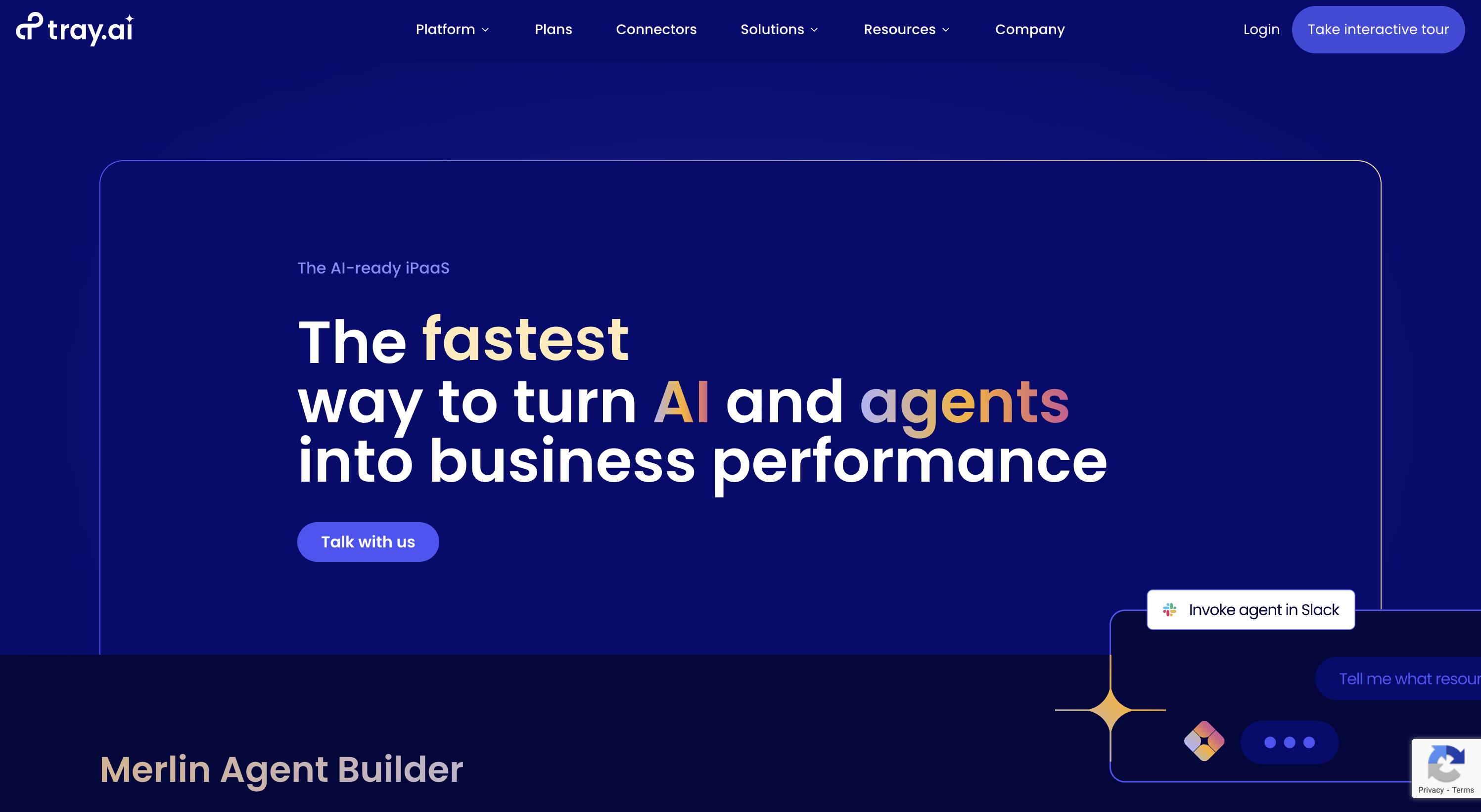
Tray.io is a low-code automation and integration platform that combines a user-friendly interface with the ability to handle complex, high-volume workflows. It’s well-suited for operations and revenue teams who need flexibility without heavy engineering involvement.
The platform is popular with mid-market and enterprise businesses looking for speed, agility, and scale in automation.
Top features
- Visual workflow builder
- Universal connector
- Strong monitoring tools
Pros
- Easy to use for business users
- Scales well for enterprise automation
- Large connector ecosystem
Cons
- Expensive compared to smaller tools
- Can require technical knowledge for advanced flows
- Not healthcare-specific
Integrations
Connects to hundreds of SaaS and enterprise applications.
Support
Enterprise support with onboarding and account management.
Ratings
4.6/5 rating.
Pricing
Contact sales for tailored plans.
6. Microsoft Power Automate

Microsoft Power Automate is part of the Microsoft Power Platform and is designed to help organizations automate workflows across hundreds of applications and services. It includes cloud flows, desktop robotic process automation (RPA), and AI-assisted automation, making it useful for businesses that are heavily invested in the Microsoft ecosystem.
It’s best suited for organizations already using Microsoft 365, Dynamics 365, or Azure, as it seamlessly connects to these services and leverages their native security and compliance features.
Top features
- Cloud flows for app-to-app automation
- Desktop RPA for legacy systems
- AI Builder for intelligent automation
Pros
- Affordable entry pricing
- Deep integration with Microsoft tools
- Strong security and compliance framework
Cons
- Complex licensing and pricing structure
- Limited healthcare-specific integrations
- Learning curve for advanced workflows
Integrations
Connects with hundreds of Microsoft and third-party apps, including Office 365, SharePoint, and Dynamics.
Support
Backed by Microsoft’s global support network and a large user community.
Ratings
4.4/5 average rating from G2 reviewers.
Pricing
Starts at $15 per user per month; additional pricing applies for attended/unattended RPA and premium connectors.
7. UiPath

UiPath is one of the global leaders in robotic process automation (RPA) and has expanded its platform into intelligent automation with AI-powered tools. It enables organizations to automate repetitive tasks, streamline business processes, and integrate legacy systems with modern applications.
Healthcare organizations use UiPath to automate patient record management, claims processing, and other administrative workflows that traditionally require manual labor.
Top features
- RPA bots for task automation
- AI-powered document understanding
- Centralized orchestration and governance
Pros
- Strong RPA capabilities
- Widely adopted in healthcare administration
- Large ecosystem of bots and integrations
Cons
- Enterprise pricing is high
- Steeper learning curve for non-technical users
- Requires dedicated resources for setup
Integrations
Integrates with dozens of enterprise and healthcare systems, enabling both cloud and on-premises workflows.
Support
Comprehensive support with enterprise service-level agreements and a global partner network.
Ratings
4.6/5 rating with thousands of enterprise reviews.
Pricing
Enterprise pricing available upon request.
8. ServiceNow
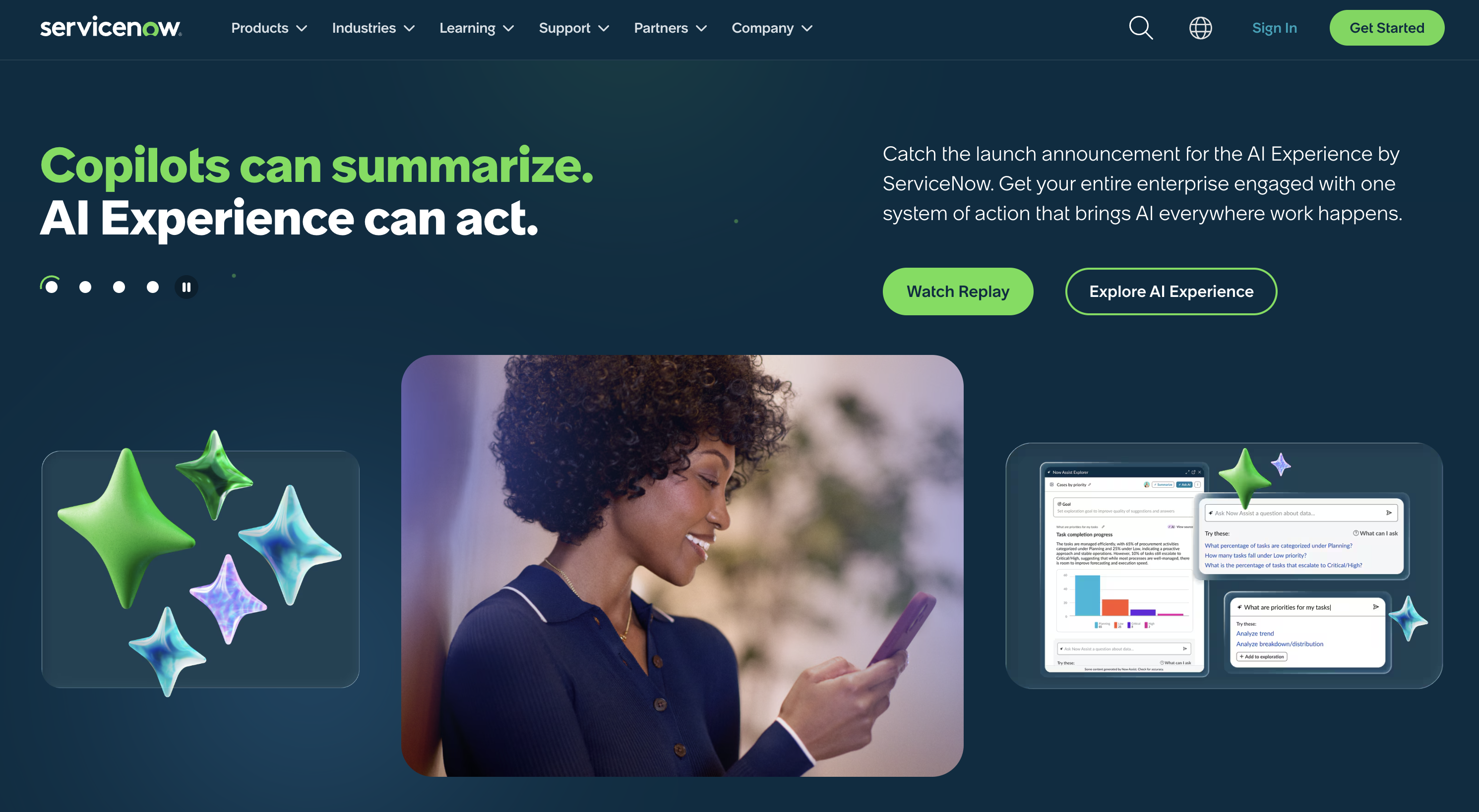
ServiceNow is a digital workflow platform best known for IT service management but also widely used for business operations and healthcare automation. Its IntegrationHub allows organizations to build integrations directly within the Now Platform, connecting IT, HR, finance, and healthcare workflows.
It is a strong fit for large enterprises that want to centralize operations and automate workflows across multiple departments with strong governance and compliance.
Top features
- IT service management workflows
- IntegrationHub with prebuilt spokes
- Strong governance and policy enforcement
Pros
- Enterprise-grade capabilities
- Robust compliance support
- Wide adoption across industries
Cons
- High licensing costs
- Complex implementation and training
- Can be overpowered for smaller teams
Integrations
Hundreds of connectors available through IntegrationHub and partner ecosystems.
Support
Enterprise-level support with professional services and partner network.
Ratings
4.4/5 rating with over 1,000 reviews.
Pricing
Custom enterprise pricing based on modules and licensing.
9. n8n
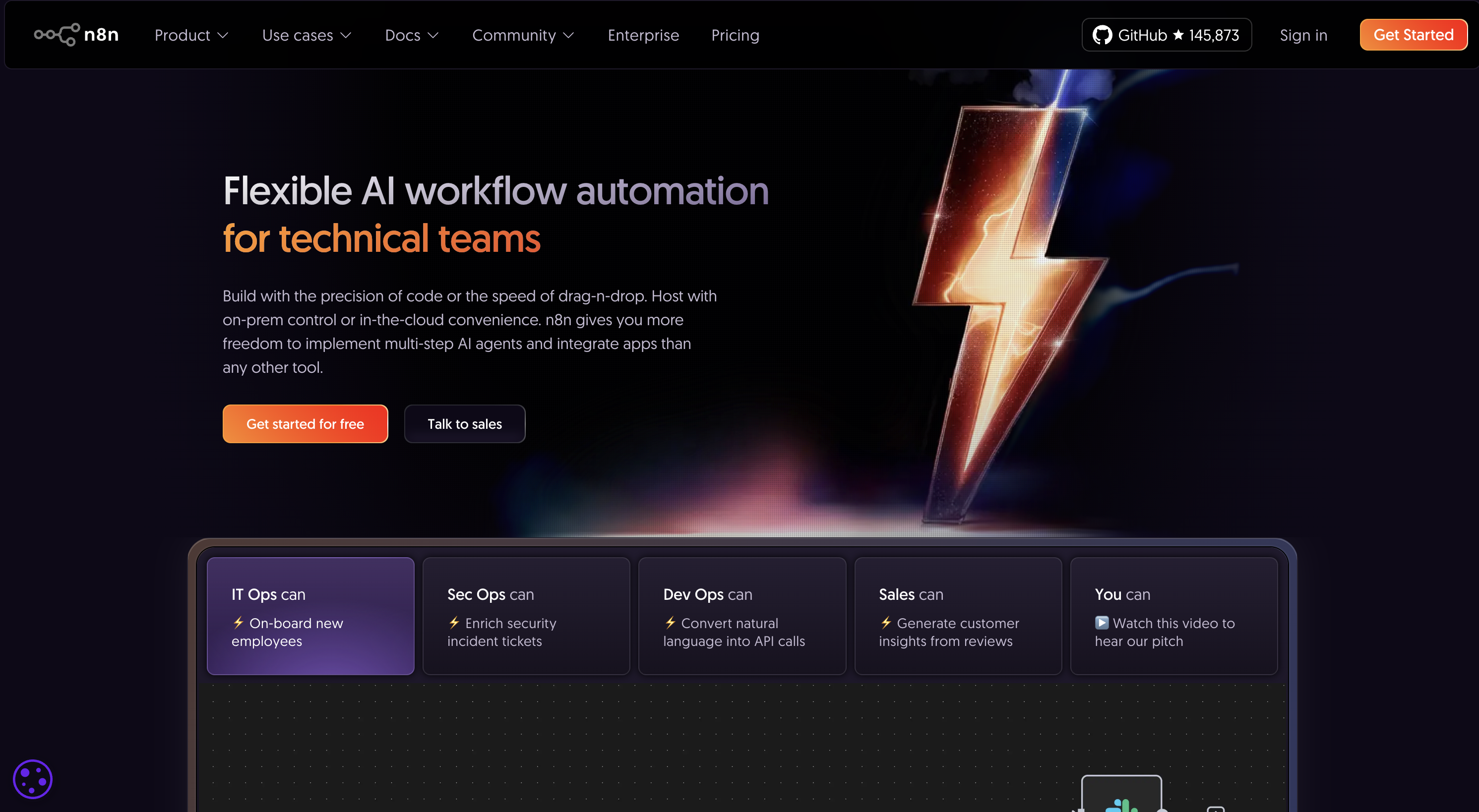
n8n is an open-source automation tool that provides a node-based interface for building custom workflows. It gives organizations the flexibility to self-host their automations, which can be an advantage for security-conscious teams.
It is best for technical teams that want complete control and extensibility while keeping costs low with an open-source model.
Top features
- Open-source and self-hosted
- 400+ prebuilt integrations
- Flexible API and webhook support
Pros
- Free self-hosting
- Highly customizable
- Developer-friendly
Cons
- Requires technical expertise
- Limited healthcare integrations
- Fewer enterprise features than larger vendors
Integrations
Supports hundreds of APIs, webhooks, and SaaS tools.
Support
Community-driven support with paid enterprise support available.
Ratings
4.8/5 average rating.
Pricing
Free self-hosted version. Paid cloud hosting plans are available.
10. IFTTT
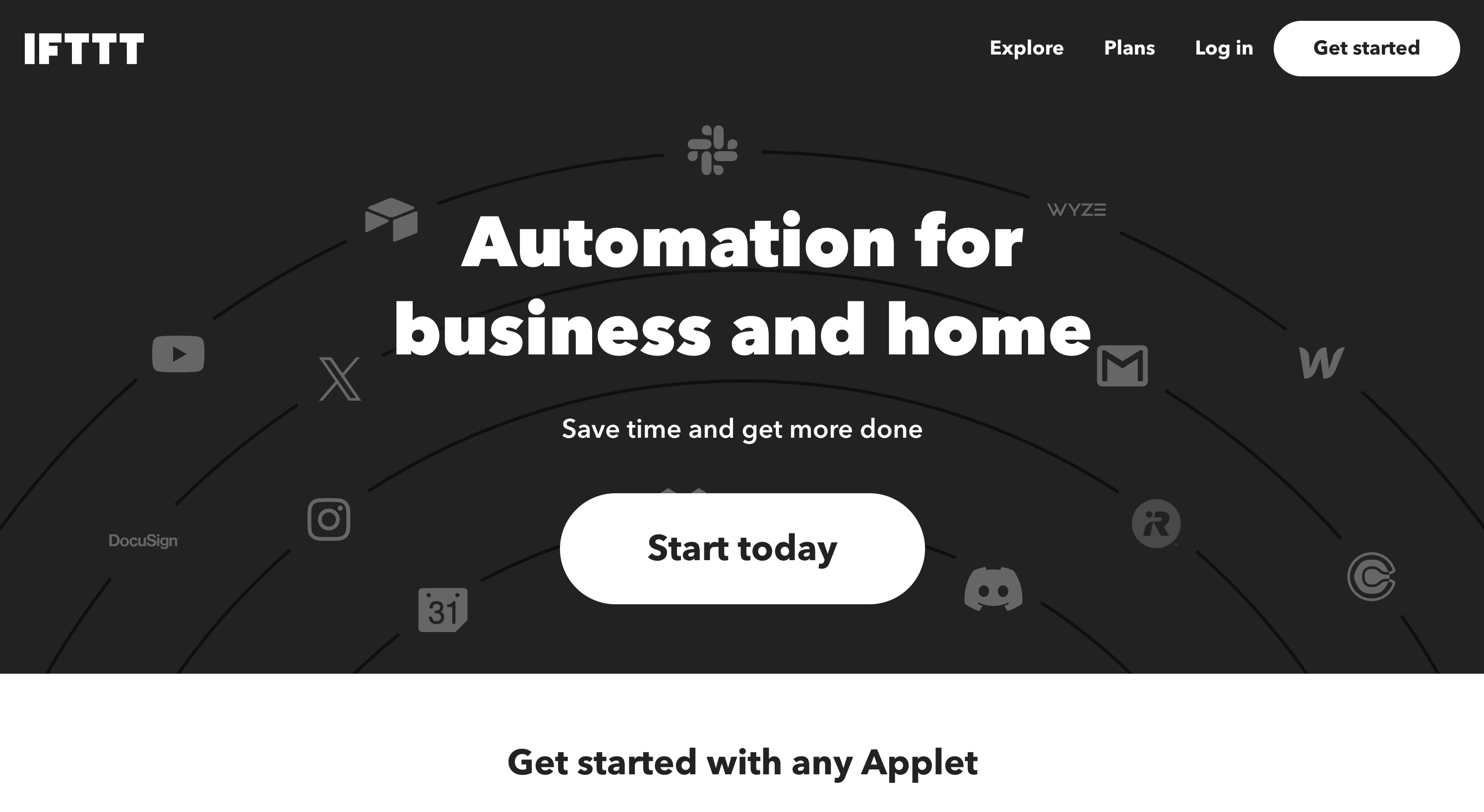
IFTTT (If This Then That) is a lightweight automation platform best known for connecting consumer apps and IoT devices. It’s primarily used for simple automations but can also support small business workflows.
While not designed for healthcare, it’s often used by individuals or small teams for lightweight, everyday automations.
Top features
- Applet-based workflows
- IoT and smart device support
- Easy mobile and web integrations
Pros
- Very easy to set up
- Free and affordable plans
- Great for personal productivity
Cons
- Not healthcare-compliant
- Limited enterprise-grade capabilities
- More consumer-focused
Integrations
Hundreds of apps and IoT devices supported.
Support
Documentation and basic support, with premium plans offering faster response times.
Ratings
4.5/5 rating.
Pricing
Free plan available. Paid plans start around $5/month.
11. Rhapsody Health
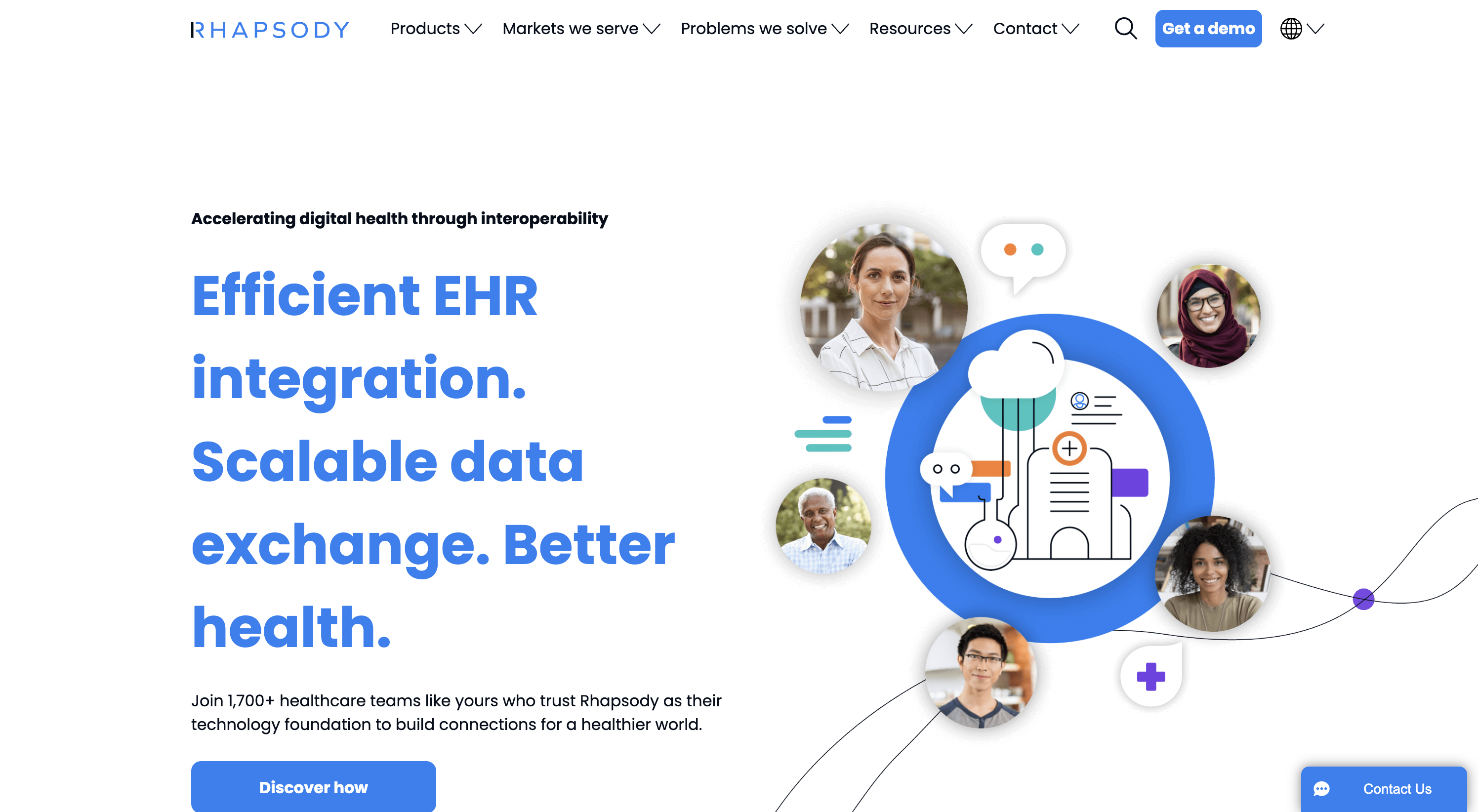
Rhapsody is a healthcare integration engine built specifically for secure data exchange between clinical systems. It’s designed to handle HL7, FHIR, and other healthcare standards, making it a trusted choice for hospitals and health systems.
It’s best for organizations that need a proven, healthcare-focused engine to support interoperability across complex environments.
Top features
- HL7 and FHIR data integration
- Healthcare-grade security and compliance
- High-throughput interface engine
Pros
- Purpose-built for healthcare
- Scales for large provider networks
- Strong compliance posture
Cons
- Limited outside healthcare use
- Legacy interface for some functions
- Requires technical resources
Integrations
Focused on connecting EHRs, lab systems, and healthcare applications.
Support
24/7 enterprise-grade support with healthcare expertise.
Ratings
4.5/5 rating (limited review base).
Pricing
Enterprise licensing, custom quotes available.
12. Vim

Vim is a healthcare integration platform that enables payers and providers to collaborate directly within electronic health record (EHR) systems. It provides apps for prior authorizations, care gap closures, and provider enablement, embedding these functions into clinical workflows.
It is best for payer-provider networks that need point-of-care solutions to improve efficiency, reduce administrative burden, and support value-based care initiatives.
Top features
- EHR-embedded provider enablement
- Apps for prior auth and care gaps
- Secure payer-provider collaboration
Pros
- Focused on healthcare workflows
- Reduces provider admin burden
- Streamlined point-of-care workflows
Cons
- Limited to niche use cases
- Not a general-purpose automation tool
- Insufficient public reviews to evaluate fully
Integrations
Integrates with major EHR systems for payer-provider use cases.
Support
Enterprise support and onboarding are available.
Ratings
Insufficient reviews to display a G2 score.
Pricing
Custom pricing available via enterprise sales.
Special mention: Zapier and Make.com
Some readers may wonder why Zapier and Make.com (formerly Integromat) aren’t on our HIPAA-compliant list.
Both platforms are widely used in the automation world, but neither is designed to handle protected health information securely.
Zapier is one of the most popular no-code automation tools, known for its massive library of app integrations and user-friendly workflows called “Zaps”.
It’s a great choice for marketing teams, sales operations, and small businesses looking for quick, affordable automation.
However, Zapier does not meet HIPAA requirements and should not be used in workflows that involve patient data.
Make.com offers a more advanced, visual approach to automation, with powerful customization and data transformation features.
It’s popular among technical users who want deeper flexibility at a lower cost.
Like Zapier, though, Make.com is not built for healthcare use and does not support HIPAA compliance.
With Keragon, healthcare providers get powerful automation combined with the compliance and security required to handle patient data responsibly.
What features should you look for when choosing healthcare integration software?
When evaluating healthcare integration platforms, it’s important to focus on the features that directly solve the most common pain points in clinical and operational workflows. The right tool should not only connect systems but also ensure security, compliance, and long-term scalability. Below are the most important features to look for:
1. Prebuilt healthcare connectors for unified workflows
Healthcare organizations often juggle multiple EHRs, scheduling systems, billing platforms, and communication tools. Prebuilt healthcare connectors, such as Epic, Cerner, Athenahealth, DrChrono, and Allscripts, allow organizations to integrate these systems quickly without heavy engineering.
This accelerates deployment and ensures that patient data flows seamlessly across the ecosystem, reducing duplication and errors.
2. HIPAA and SOC 2 compliance for secure data handling
Automations that involve patient health data can create significant regulatory risks if not managed properly. A platform that offers HIPAA and SOC 2 Type II compliance, along with encryption and audit trails, ensures that protected health information (PHI) remains secure.
This reduces the burden on compliance teams while giving healthcare leaders confidence that integrations won’t compromise patient privacy.
3. Drag-and-drop workflow builder for faster automation
Custom integrations can take months of developer time, often slowing down projects and leaving staff stuck with manual processes. A drag-and-drop workflow builder empowers non-technical teams to automate common workflows, such as appointment scheduling, claims submissions, or patient intake, in days, not months.
This accelerates innovation while freeing up IT resources for more strategic work.
4. Error handling and monitoring for reliable operations
When workflows fail, the impact can cascade across patient care, billing, and compliance. Platforms with robust monitoring, retry logic, error notifications, and logs make it easy to catch problems before they escalate.
Healthcare organizations benefit from the assurance that integrations are reliable and transparent, helping staff respond quickly when something does go wrong.
5. Cloud-native infrastructure for scalability
As healthcare organizations expand and patient data volumes grow, integrations must scale effortlessly. Cloud-native platforms are designed to handle increases in usage automatically, ensuring performance and uptime without requiring large infrastructure investments.
This future-proofs your integration strategy and ensures the platform grows alongside your organization.
6. Analytics and reporting dashboards for proving ROI
Executives want measurable results from technology investments. Platforms with built-in analytics and reporting can track time saved, error rates reduced, and revenue impacts from automation.
These dashboards provide tangible evidence of ROI, making it easier to justify automation initiatives and secure buy-in from leadership.
7. Role-based access and governance for collaboration
Integrations are most effective when both IT teams and frontline staff can collaborate. Role-based access controls, approval workflows, and governance features allow organizations to safely open automation capabilities to non-technical users while maintaining oversight.
This ensures compliance is preserved while empowering teams to build and optimize workflows.
Related Articles








_%20Use%20Cases%20%26%20Benefits.png)

%20and%20Automation.png)


